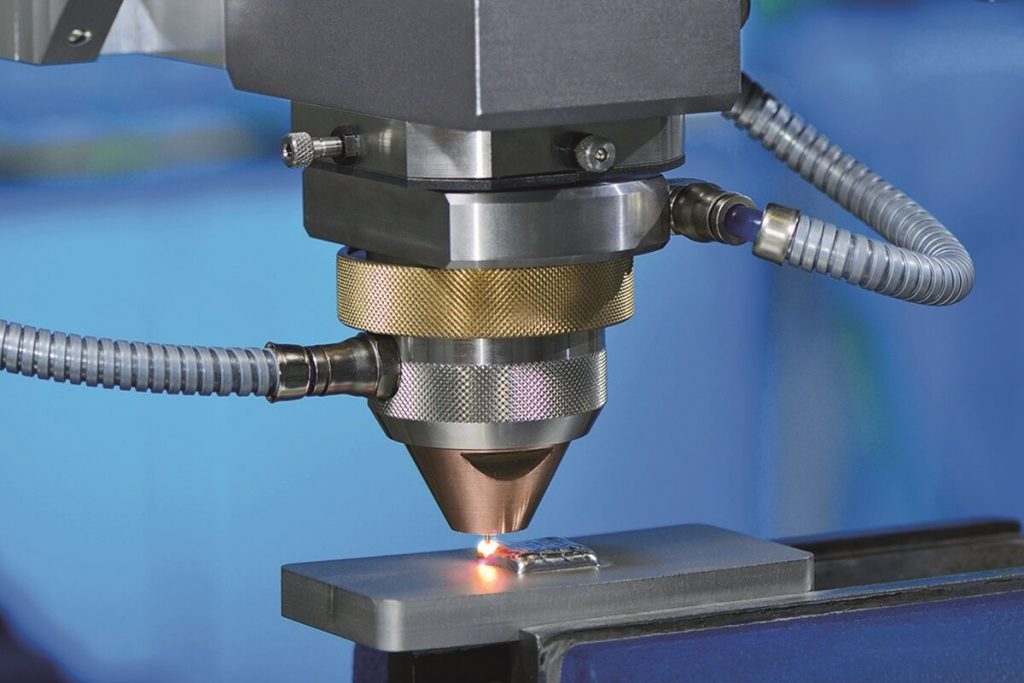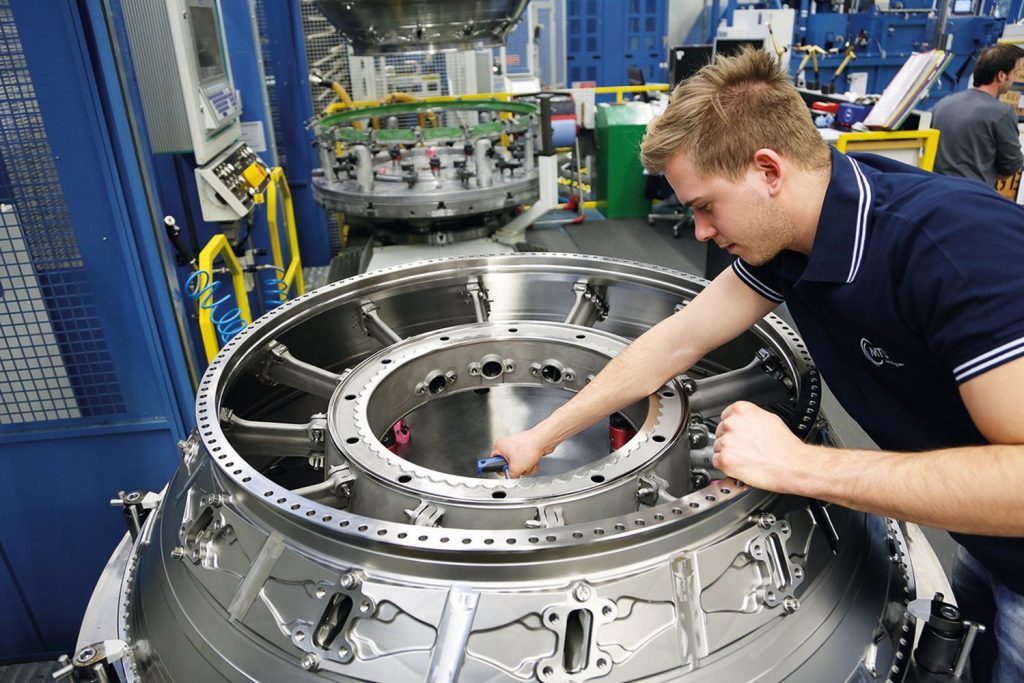A joint research project funded by the German Federal Ministry for Education and Research (BMBF) will see the development of a new highly efficient modular hybrid manufacturing cell. The eight-partner ProLMD project was initiated four years ago, with the initial aim of producing new hybrid manufacturing processes that combine conventional methods with the laser material deposition (LMD) AM process.
Jan Bremer, a scientist at the Fraunhofer Institute for Laser Technology, one of the partners, explains: “The aim was to develop economical and robust system technology for the LMD process, based on a jointed-arm robot, and to integrate it into a process chain for hybrid manufacturing. We are moving along the process chain for robot-based hybrid additive manufacturing and researching various technologies required for this. The spectrum of content covers everything – from processing heads, robot and shielding gas systems to welding processes, quality assurance and software.”

Hybrid additive production
Over the last four years, some of the project partners have begun to integrate additive manufacturing technology within their existing process chains. MTU Aero Engines has been using LMD to add functional elements to traditionally manufactured engine components; Airbus has been reinforcing some of its components via 3D ribbing; and Mercedes-Benz has adapted a press tool on its body production line to include an LMD tool head. The partners’ actions are all in line with the project’s vision of locally reinforcing or modifying conventionally manufactured components using 3D printing.
Bremer adds, “These examples show what we understand by hybrid manufacturing. It is the flexible combination of advantages from different manufacturing processes, as it combines any conventional manufacturing process with LMD to form a continuous process chain.”

The ProLMD project
Since the partners have seen some success in developing individual hybrid manufacturing processes, the project has evolved into the development of a single modular hybrid manufacturing cell. The cell is a multi-axis KUKA robotic arm with an LMD toolhead and is designed to be integratable into existing process chains with ease. To enable maximum application flexibility, the partners are working to facilitate the use of both powders and wires as additive materials. According to Bremer, the project is focused on machining larger, more complex components weighing up to 1.2 tons with diameters up to 2m.
The partners all have defined roles within the project. For example, KUKA is acting as project manager and is responsible for the cell integration of the robot, while Laserline is responsible for designing and developing the laser beam source and optics.

The project partners are also working on a smaller, secondary project alongside the main hybrid manufacturing cell – a more compact robotic cell for hybrid AM production. The second robot will be more cost-efficient than the larger system and is designed to cater to the needs of SMEs. The 3.1m long robot arm has been scaled down to just 2m and the 90kg load capacity has been reduced to 60kg. The smaller robot will also be focused on just powder-based LMD, losing the ability to work with wire-based additive materials.
Hybrid production draws on the strengths of both conventional and additive manufacturing for a more effective result. Last year, DMG MORI, a leading machine tool manufacturer, launched its LASERTEC 125 3D hybrid additive manufacturing system. The 5-axis laser deposition welding (LDW) system is designed for the maintenance, repair and production of large industrial parts. More recently, ANCA, a Melbourne-based manufacturer of CNC grinding machines, has developed its own hybrid 3D printing system for manufacturing custom-designed machining tools.
The nominations for the 2020 3D Printing Industry Awards are now open. Who do you think should make the shortlists for this year’s show? Have your say now.
Subscribe to the 3D Printing Industry newsletter for the latest news in additive manufacturing. You can also stay connected by following us on Twitter and liking us on Facebook.
Looking for a career in additive manufacturing? Visit 3D Printing Jobs for a selection of roles in the industry.
Featured image shows robot research cell depositing wire laser material at Fraunhofer ILT. Photo via Fraunhofer ILT.


